14. Funny Games (Michael Haneke)
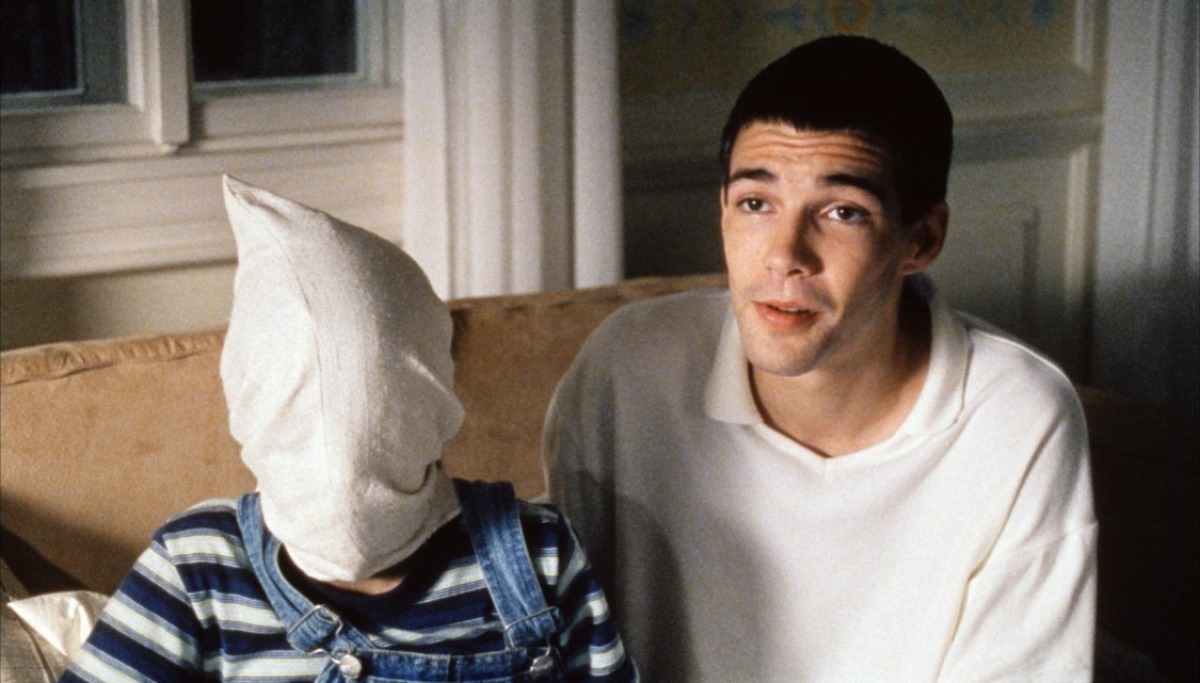
We are of course talking about the 1997 original, rather the 2007 English language remake (although the latter is shot-for-shot, so it makes little difference). Haneke directs this horrific hostage narrative in which two young men trap a family inside their holiday home. The eponymous games that are involved cause catastrophic circumstances for the innocent family. This film breaks the fourth wall often, and is shocking often to the extremities of cinematic form.
It is most noted for the scene in which one of the criminals is watching television as the drama unfolds in the rest of the frame. Talking [to the audience] he asks if there is anything else on, or if he should rewind the sports show on the TV. When he hits rewind on the remote, the footage we have just witnessed also rewinds before our eyes.
As an audience member you are left alienated and terrified about what will happen next, the possibilities being endless. These are examples of why ‘Funny Games’ is so unique – it uses its self-awareness to shock the audience, rather than to impress.
15. Drive (Nicolas Winding Refn)
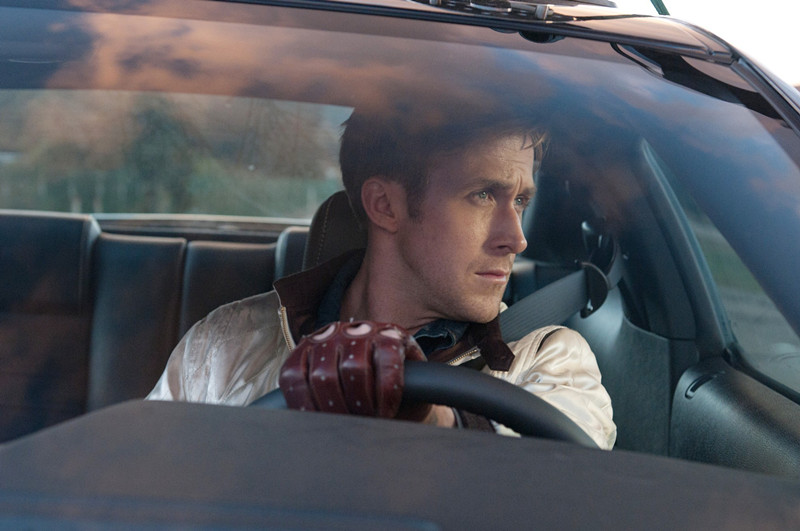
Our unnamed hero figure (portrayed by Ryan Gosling) is never just a singular character. The reason ‘Drive’ works so well is that it is evidenced clearly that Gosling’s character has to mean different things to different individuals and groups in the film. He is a stuntman, a getaway driver, and an unlikely father figure.
Soundtracked by a lot of left-field electronica artists, and stylishly lit, the film is quick to establish the complexities of the relationships. Great performances from a mostly silent Gosling, and neighbour Irene (Carey Mulligan) who is a single parent whilst the father is behind bars.
The movie is fast paced, uncompromising, and brutal in its violence – both physically and in the structures of criminality at large. A more recent feature, yet an absolute must-see.
16. The Double (Richard Ayoade)
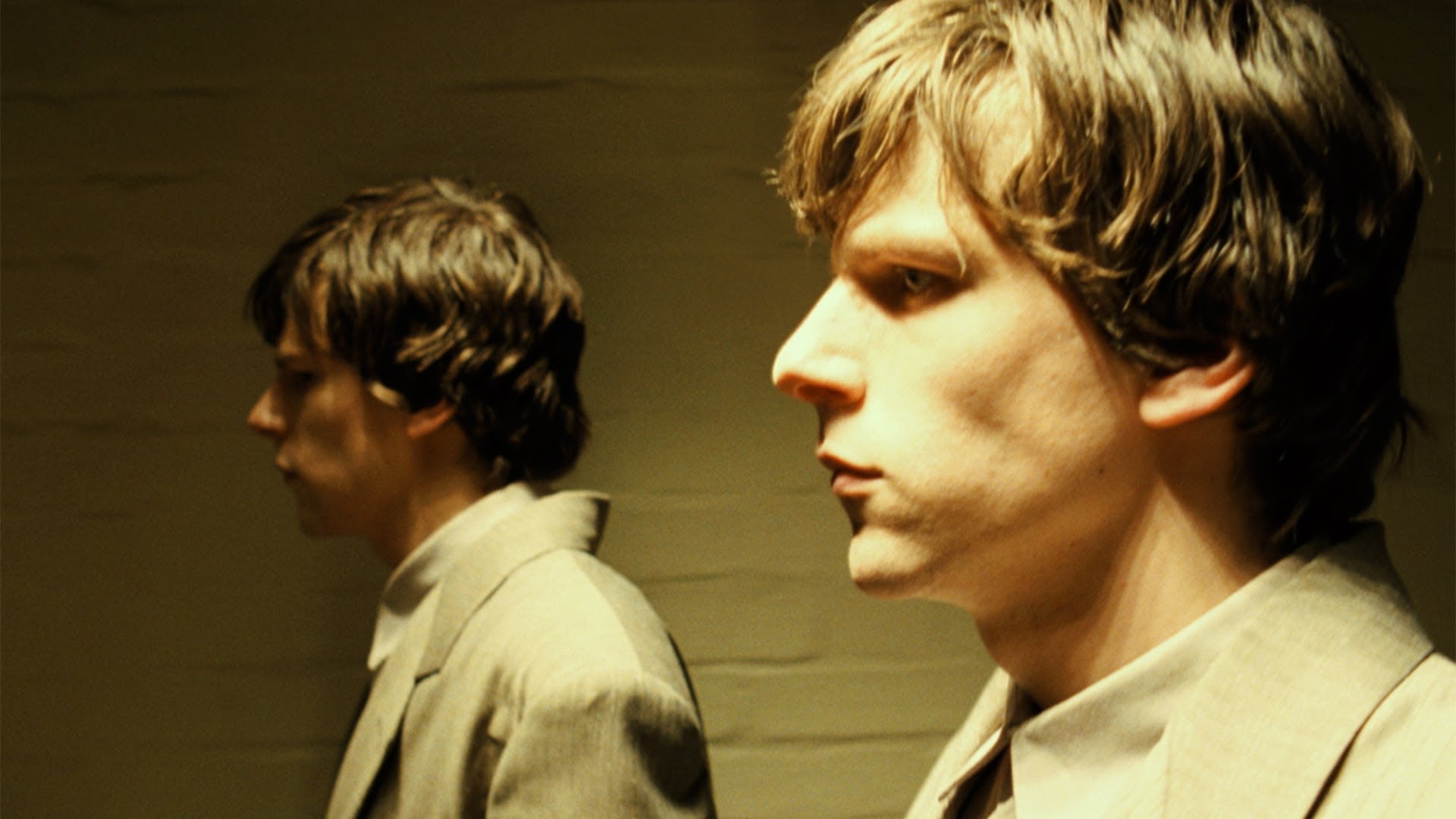
The second feature from British director Richard Ayoade. Taking a traditional narrative adapted from the Dostoyevsky novella of the same name. Jesse Eisenberg stars twice, as an afflicted office worker and an identical new colleague employed by the same company. The doppelgänger seeks to displace the original worker in every respect.
The film is visually dark and uncompromising, reflecting the harsh tones of the film. The only bursts of colour we do see are when the “manic pixie dream girl” character (Mia Wasikowska) gets screen time.
The picture also gets little references to ‘Submarine’ (Ayoade’s debut) with Paddy Considene and Craig Roberts making brief appearances. Considine features in a fake television series often displayed or alluded to in the film, and Roberts is a detective. These appearances are used to comment on the mental states of our protagonist.
The visuals and cinematography are constantly providing signs of the text from which the film was adapted.
17. Edward Scissorhands (Tim Burton)
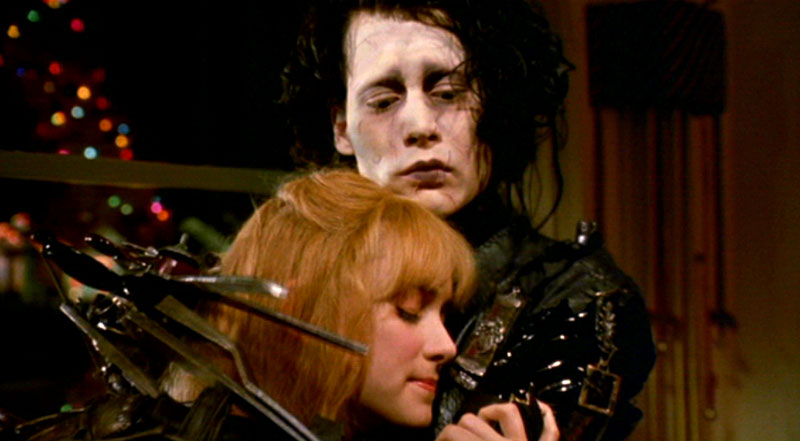
A true outsider story. Edward (Johnny Depp) is separate from the suburban American ideals overlooked from his mysterious gothic mansion. Always the case with Tim Burton, this film is a visual feast. The houses and cars almost identical, we often observe the archetypes; all of the men drive to work at the same time each morning leaving their wives at home.
It takes the introduction of someone physically and physiologically different – a guy with scissors for hands – to disrupt the already troubled domestic systems at play.
Great performances from Depp, Winona Ryder, and the late Vincent Price. Soundtrack from Danny Elfman, and nods early horror films… it’s a classic Burton recipe.
18. Scream (Wes Craven)
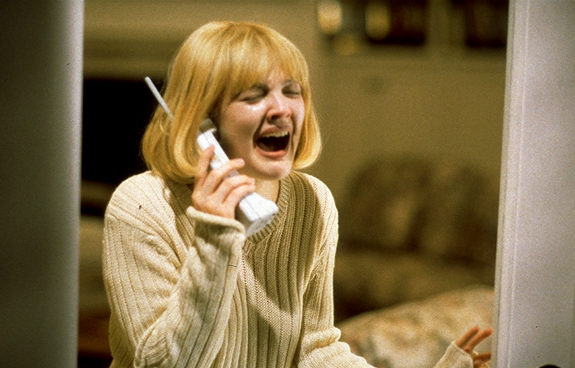
The reinvention of the horror genre can be pinned on this single film. The initial death of a character we would assume would be in the entire film is the first shocker. The voice of Ghostface (famously parodied in ‘Scary Movie’) is terrifying.
The narrative progresses ruthlessly. The masked serial killer asks “what’s your favourite scary movie?” showing some obvious self-awareness, the opening scene containing a quiz about classic horror cinema, and later the characters establish (and inevitably break) a set a of rules in order to successfully survive a horror movie.
The fast pace and sense of awareness in this film paved the way for literally thousands of other films like it. The days of slow paced atmospheric horror films are over. Instead we get a introduction of narratives designed with a number of turns, twists, and indeed jumps.
19. Donnie Darko (Richard Kelly)
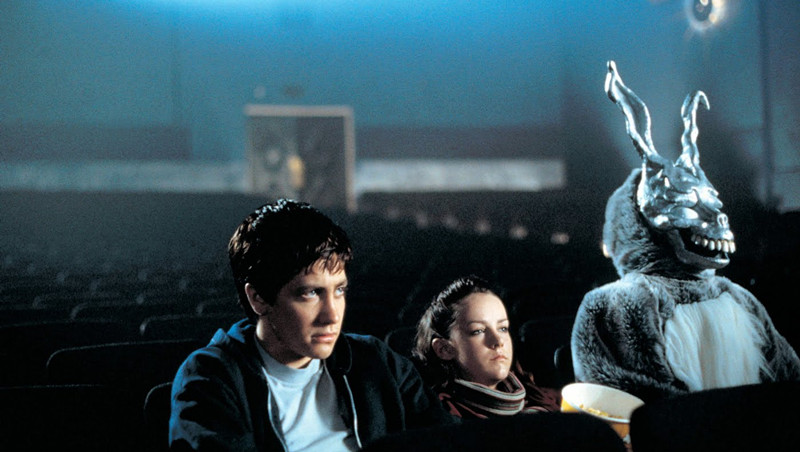
Into the ’00’s and what is on paper a bizarre film about a teenager who hallucinates an imaginary giant rabbit. Terrific performances from Jake and Maggie Gyllenhall, Drew Barrymore and Patrick Swayze. We get a number of references here that are at odds against each other, the narrative forming somehow as a result.
First off there are the horror elements, the film ending on halloween. This is contrasted against all of the teen movie aspects – most obviously displayed toward the start of the film as we are introduced to the school environment through a music video of sorts. The film is rich in its reference to literature – the short story studied being one from Graham Greene. The quote about a beautiful combination of words being “cellar door” is said to have first come to light in a quote from Tolkien.
Combine all that in a circular narrative and add music from Echo and the Bunnymen, and a new version of the Tears for Fears track ‘Mad World’, and you get a movie that has an infinite number of readings and concerns. It is a modern classic.
20. The Lego Movie (Phil Lord / Christopher Miller)
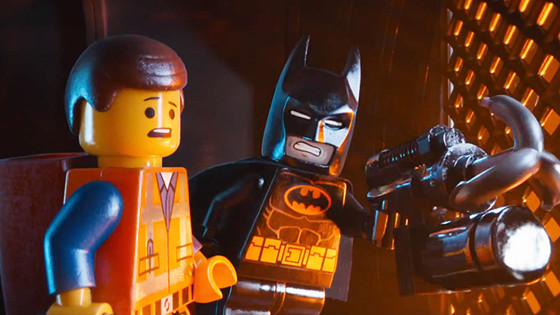
An animated feature on this list may be a surprise, but ever since ‘Shrek’ it has been clear that animation can command two audiences; the narrative for children with enough humour and abstraction for an adult audience to invest in. There are plenty to choose from; ‘The Simpsons Movie’ an obvious choice, and ‘Wreck It Ralph’ for the sheer volume of video game references.
In the end it had to be ‘The Lego Movie’ fulfilling this 20th place in the Po-Mo list; the amount of formal references, jokes, and sarcasm reaching levels you might find in an episode of ‘Family Guy’ or ‘Robot Chicken’.
The central character, Emmet (a generic Lego figure) works in construction, naturally. He goes about daily business singing a catchy song – ‘Everything is Awesome’. In actual fact it turns out everything isn’t quite as awesome as this would lead you to believe.
What follows is a journey through different environments with a multitude of different characters from different Lego worlds. There are layers of content meaning the movie can be viewed by lots of different ages and still be relevant, and funny. This has only set the stage for more of the same. The Lego Batman Movie is to follow.
Author Bio: Zach is a Scotland based writer and film fan. He has a degree in English and Film from Manchester Metropolitan University.